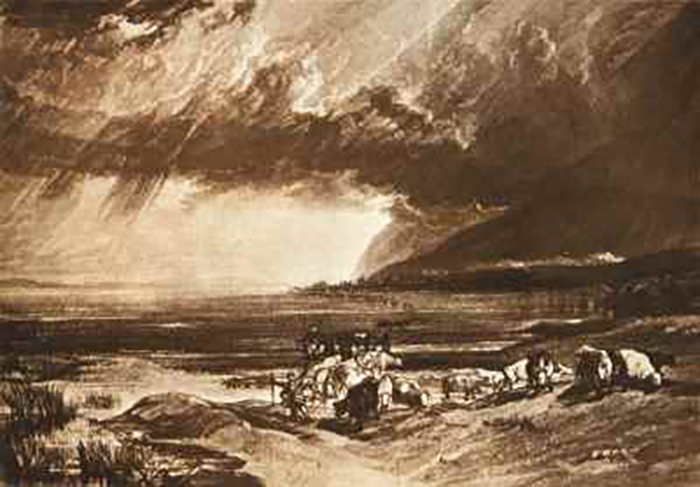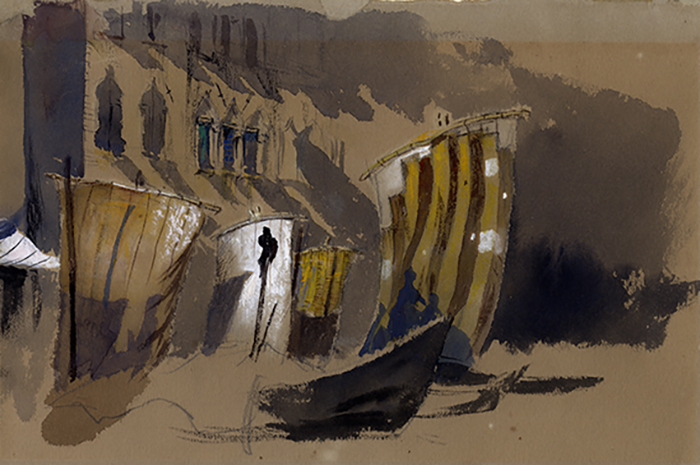Exploring ‘savageness’, ‘naturalism’ and ‘changefulness’ within the work of John Ruskin and beyond.
Solway Moss has long been regarded as one of the finest images in J.M.W. Turner's Liber Studiorum: a series of engravings that plays a central part in Turner's work. The piece was built up from a combination of etched lines (for outlines and accents) and mezzotint engraving (for light and shade), and Turner made no attempt to smooth away the visible traces of this process. The lines and the shading remain distinct from each other, and the engraving may even seem quite coarse and rough in places. Solway Moss is not a neat and tidy picture; to use John Ruskin’s words, there is ‘savageness’ but also ‘naturalism’ and ‘changefulness’ in its style which lacks repetition.
J.M.W. Turner: Solway Moss, engraved by T. Lupton for part 11 of the Liber Studiorum, 1816
Curiously, Ruskin first explained these terms not in reference to Turner’s work but to typical characteristics of Gothic architecture, in The Stones of Venice. Ruskin’s extensive exploration of nature and architecture over many years involved close study, especially through drawing. ‘Savageness’, ‘naturalism’ and ‘changefulness’ form an important part of what we might call Ruskin's 'organic vision': a way of seeing the natural world as an integrated whole, resembling a living organism in which the component parts undergo individual variation and growth, subject to certain fundamental laws of life. After all, Ruskin insisted that artists (including the Gothic stonemasons) produce their best work when they are inspired by the natural world, for this is how 'life' enters their work. By 1860, he saw the same essential patterns in the growth of leaves on a tree, the composition of a great painting and the behaviour of an ideal society (Modern Painters, Vol. 5).

John Ruskin: Sails of Fishing Boats, Venice, 1845
‘Ruskin’s Organic Vision: Nature, Life and Art’ was divided into two sections: Gallery 1 and Gallery 2. Gallery 1 displayed many of Ruskin’s drawings, diaries, sketchbooks and writings to show the development of his ‘organic vision’ of nature, art and architecture up to around 1860. This part of the exhibition also explored Ruskin’s views on Gothic characteristics and in relation to his concept of ‘The Law of Help’. Carrying this concept through to Gallery 2, visitors were invited to consider the ‘savageness’, ‘naturalism’ and ‘changefulness’ of the work displayed there, and consider its relation to Ruskin’s work and outlook on life.
As well as Turner’s Solway Moss, items on display included:
- Ancient Chinese ceramics
- British studio pottery (including the work of Edward Hughes, Bernard Leach and Katherine Pleydell-Bouverie)
- Abstract art (including pictures by Wilhelmina Barns-Graham, Sandra Blow, Terry Frost and S.W. Hayter)
- Performance art by Bob Dylan

John Ruskin: Under transept gallery, Gisors, in a sketchbook, 1848
The above description for this exhibition is an edited version of a text written by Alan Davis: Visiting Fellow, The Ruskin Programme.


